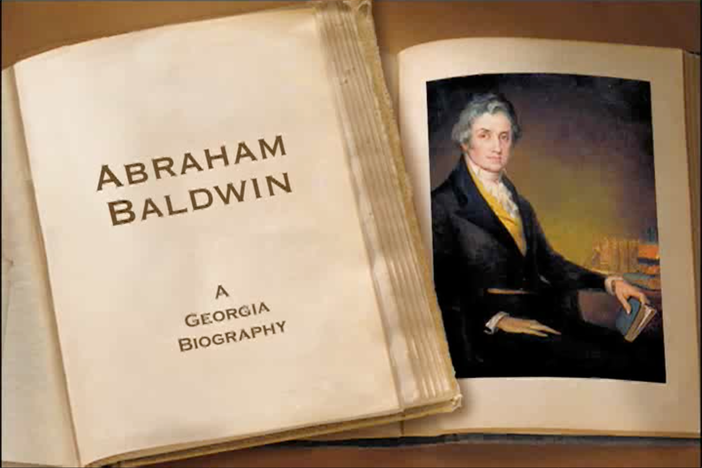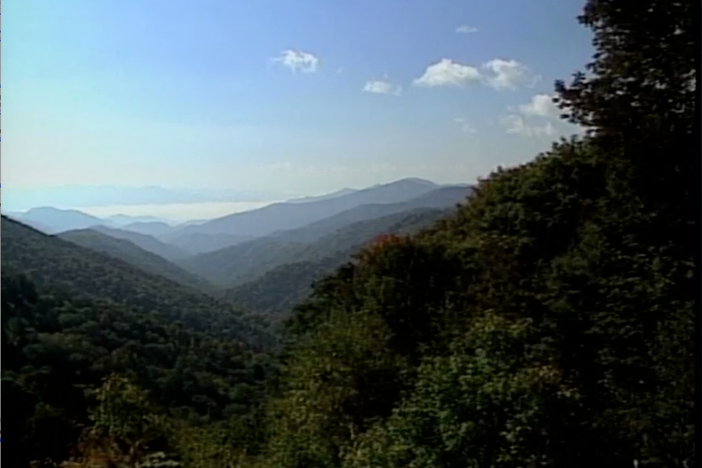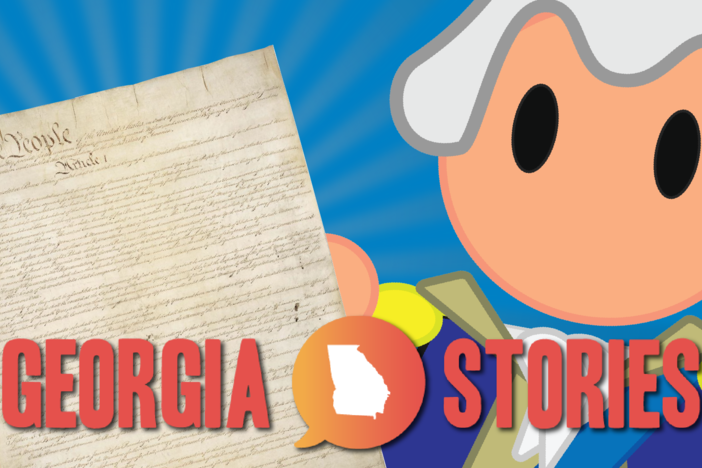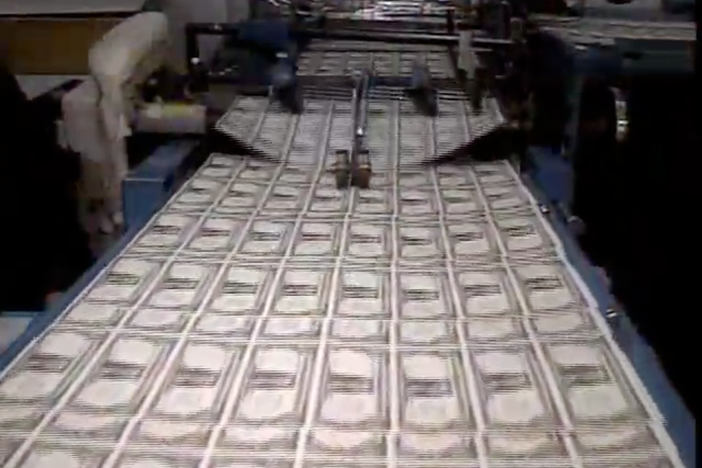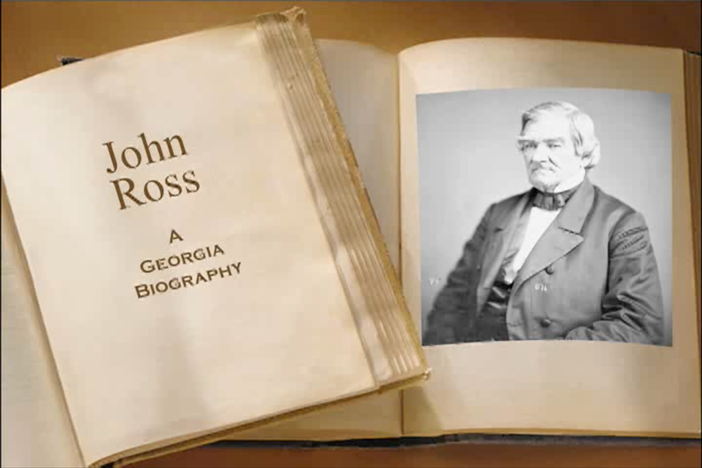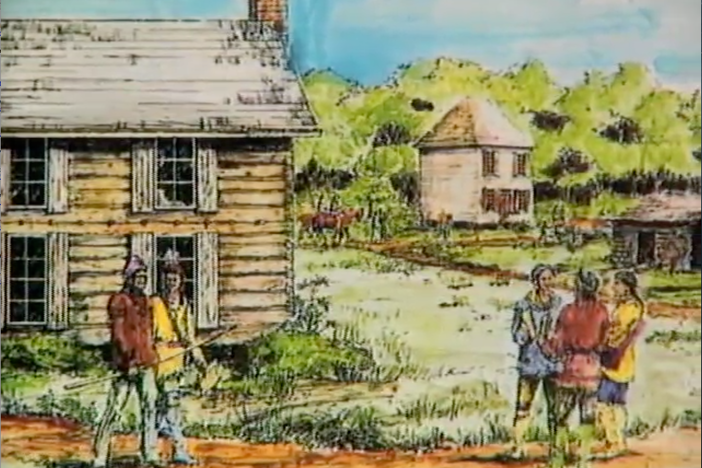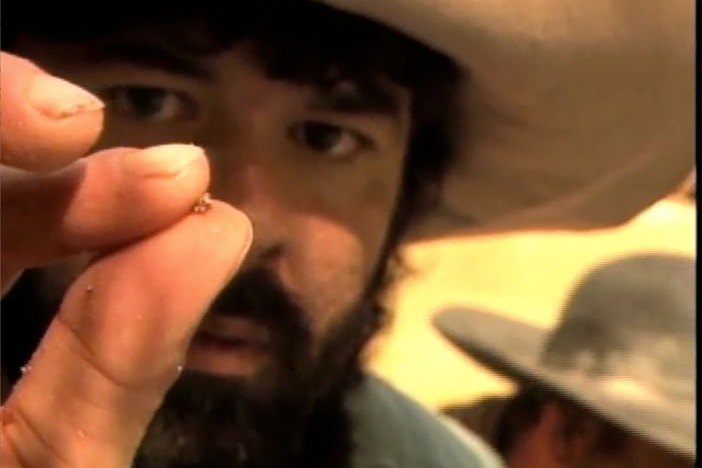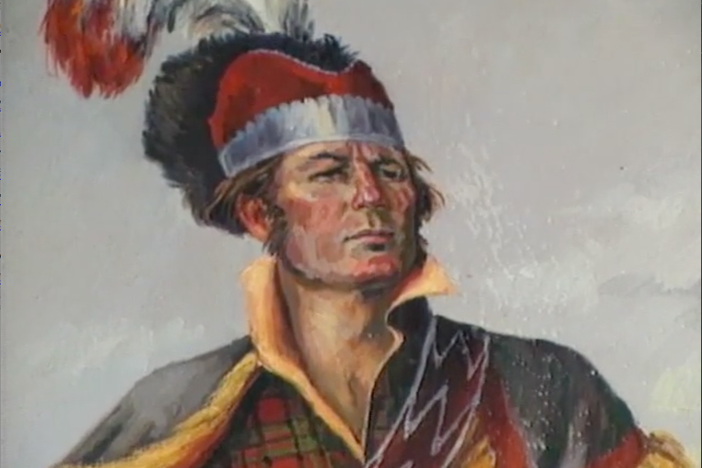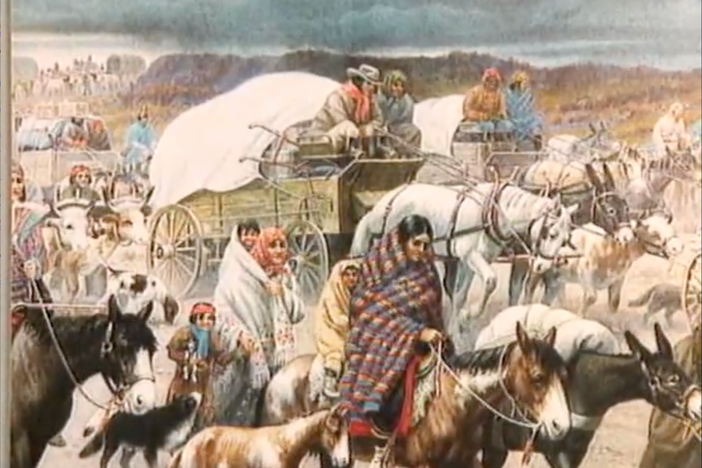How Much Money Is a Gold Coin Worth?
West Georgia College professor Dr. Carol Scott and North Georgia College professor Dr. Ray Rensi discuss how colonial settlers had little need for money as currency was required only when goods were needed that came from elsewhere. During the Dahlonega gold rush, miners did not know how much of their nuggets or gold dust was pure gold. The U.S. Mint opened a Dahlonega branch in 1838, that remained in business, stamping gold coins, until 1861 when the Civil War began. But the mint never reopened. It was gone along with the easy-to-find gold.
How Much Money Is a Gold Coin Worth?
West Georgia College professor Dr. Carol Scott and North Georgia College professor Dr. Ray Rensi discuss how colonial settlers had little need for money as currency was required only when goods were needed that came from elsewhere. During the Dahlonega gold rush, miners did not know how much of their nuggets or gold dust was pure gold. The U.S. Mint opened a Dahlonega branch in 1838, that remained in business, stamping gold coins, until 1861 when the Civil War began. But the mint never reopened. It was gone along with the easy-to-find gold.
Social Studies
Evaluate the economic impact of various industries in Georgia including agricultural, entertainment, manufacturing, service, and technology.
Analyze how key people (John Ross, John Marshall, and Andrew Jackson) and events (Dahlonega Gold Rush and Worcester v. Georgia) led to the removal of the Cherokees from Georgia known as the Trail of Tears.
1. What is the difference between the "gold standard" which gave our money value during Georgia's expansion period and why money has value today?
2. Why wasn't currency always necessary hundreds of years ago?
3. Why did the Dahlonega Mint open and what was its purpose?
1. Brainstorm through this scenario with your classmates: money as we know it does not exist. What would people do when they needed to go to the store for food or clothing?
2. Write a play depicting the problems the miners and merchants had in exchanging gold for merchandise and services. The play could culminate in the creation of the Dahlonega Mint.
3. Research Paper: The Gold Standard - This could be for those who like economics or the stock market. Trace the beginning of the gold standard until the end of its use. Explain in layman's terms why the U.S. does not use gold to back up its currency and, in spite of this, why the U.S. dollar has usually held up so strongly against other currency around the world.
economics: the study of how wealth, goods, and services are earned and distributed and build up a society
assimilation: the process of absorbing a minority group into a prevailing culture
culture: the beliefs, accomplishments, and behavior patterns of a group of people which are transmitted from one generation to another
treaty: a formal agreement between nations or groups and approved by each party
ceding: the process of giving up or relinquishing (esp. land or territory)
1. What is the difference between the "gold standard" which gave our money value during Georgia's expansion period and why money has value today?
In the early days of America's history, every piece of currency issued by a government was "backed" by an amount of gold. Literally, you could trade in your currency for an exact amount of gold at a bank. Today, that is no longer the case. Instead, we have fiat money. That is, our currency has value because the government says it does and consumers have faith that it will be accepted for the payment of goods and services.
2. Why wasn't currency always necessary hundreds of years ago?
In simpler times, most people made everything they needed--clothes, food, even their shelter. And if they need something they couldn't make themselves, they would barter, or trade, for it. For instance, a farmer that grew lots of crops could trade them to a rancher who had lots of animals. But once exchanges began to get complex, or people didn't want what others had to offer, then currency became very useful.
3. Why did the Dahlonega Mint open and what was its purpose?
Without coins, miners would trade pinches of their gold dust for goods and services. To turn gold dust into coins, miners would have had to make the perilous journey to Philadelphia. Instead, a mint was opened in Dahlonega to solve that problem by checking the purity and weight of all gold dust found and then minting coins for exchange.
